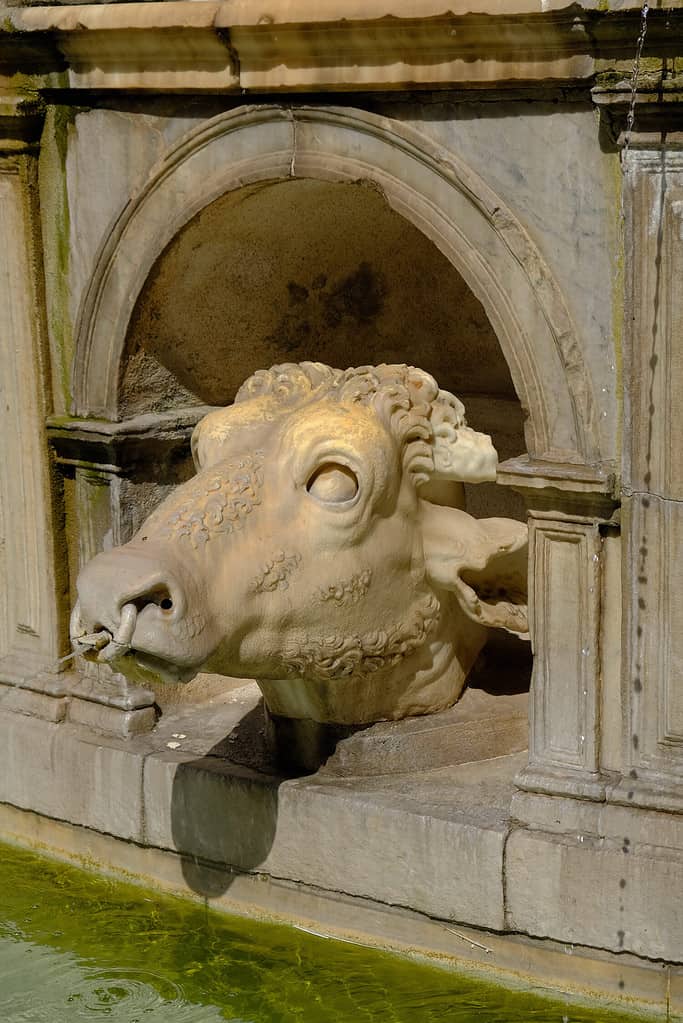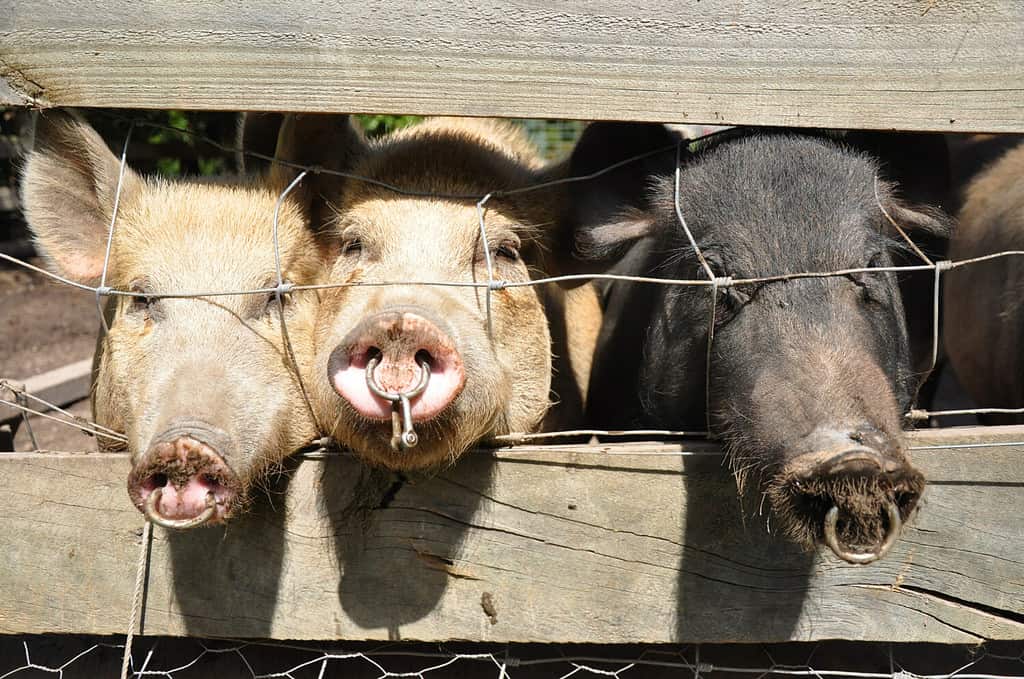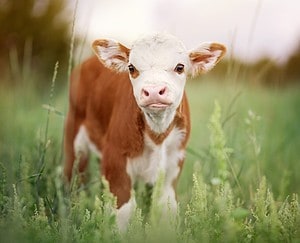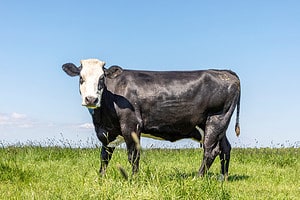In recent years, nose rings have grown in popularity as an edgy fashion statement. But piercing the nose to insert a ring is a practice that has been used in livestock and people for thousands of years. With bulls, nose rings are not for fashion. Instead, they serve a practical purpose. Read on to discover the reasons behind bovine nose rings!

A ring in the nose of a bull is not just a decoration. It serves a practical purpose.
©leopictures/Shutterstock.com
History of Nose Rings
About 3,000-4,000 years ago, ancient civilizations such as Sumer in Mesopotamia and some of the civilizations of the Indian subcontinent placed rings in the noses of bovines, equines, and people. The practice spread around the world and became part of many cultures in Africa, Asia, and South and Central America. In animals, its main function was controlling undesirable behavior. In people, rings in the nose were an indication of status, wealth, and beauty.

This bull sculpture is part of the Fontana Pretoria in Palermo, Sicily, dating to 1554-5.
©DRIMOROND/Shutterstock.com
Purpose of Nose Rings in Animals
Nose Rings in Bulls
In bulls and other animals, the purpose of piercing the septum and inserting a ring is usually to control an animal’s behavior. The nose is a sensitive part of the body, so when a ring there is pulled rubbed, it causes discomfort. In bulls, a ring in the nose is a safety measure to control these large and often aggressive animals. It is not required by law to use a ring on these animals, but many farmers choose to do so.
Piercing a bull’s nose happens at nine to 12 months. The farmer can use a rope or staff attached to the ring to lead the animal around. The ring can also be attached to a rope or chain attached to the bull’s horns or collar to limit its aggressive movements. A length of rope might be left dangling from the ring so that when the bull ducks its head to attack, it will step on the rope and stop itself.
Nose Rings in Calves
Research has shown that weaning calves by removing them abruptly from their mothers causes distress to both animals. As an alternative, some farmers fit calves with clip-on plastic nose rings that do not require piercing. They have spikes that poke the cow’s udders when the calf tries to suckle. The pain causes her to move away from her calf or even kick it so it can’t nurse, sometimes creating injury. These devices can also be used on sheep and goats.
Nose Rings in Swine

Nose rings in swine are a painful means of preventing them from rooting under fences.
©Sportlibrary/Shutterstock.com
In swine, the purpose of nose rings is to cause pain to prevent pigs from rooting. This is especially a concern as they have a habit of rooting under fences to escape their enclosure or raid tasty gardens. It is also a safety issue, as large swine can have aggressive temperaments and inflict serious injury with their teeth and tusks.
Pig nose rings are controversial, however, because they inflict pain when the animal engages in the essential behavior of foraging and eating. They are often affixed to the rim of the nose to make them more painful, and several are used as they can sometimes be lost or torn out. It is also unclear whether they are even effective, as the instinct to root is so strong pigs may engage in it despite the pain. Animal welfare groups urge that the practice be banned, and some localities with a strong emphasis on animal rights have followed suit.
Purpose of Nose Rings in People
For Women
It’s often assumed that a pierced nose symbolizes slavery, but more often, in human cultures, they are a sign of status and wealth. The symbolism differed from culture to culture and depending on where and how the nose was pierced and what type of piercing the person wore. In the early books of the Bible, nose rings for women were associated with marriage. By contrast, the practice for indicating a person was a permanent slave was to pierce their ear with an awl. In Hindu cultures, a nose ring marked a woman as being ready for marriage. A large and valuable nostril ring was a way to show off the husband’s wealth. In Middle Eastern and African cultures, it was also a portable kind of wealth the woman could wear and later sell to support herself if she became divorced or widowed.

In traditional cultures, nose rings could be a signal of power, status, and wealth.
©yurakrasil/Shutterstock.com
For Men
Nostril or septum piercing was not only for women, though. Carvings at the Great Ballcourt at Chichen Itza indicate that Mayan men pierced their noses to indicate their status. North American tribes used nose piercings as a rite of passage. Tecumseh, the famous Shawnee leader, wore a ring in his nose to signify his leadership role. Traditionally, Asian cultures believed the left nostril to be the female side and the right nostril the masculine side for piercing purposes.
Nose Rings in Modern Culture
In modern Western cultures, no side of the nose is associated with males or females. Instead, individuals choose a side for their piercing based on personal preference. Nose piercings are not always as culturally well-accepted as ear piercings. For example, educational institutions and workplaces sometimes place restrictions on wearing nose jewelry, particularly for people in customer service positions. Families of minors are less likely to agree to a pierced nose than they are to have pierced ears. Because nose rings are seen as more “edgy,” some people choose these piercings as an expression of rebellion and individuality. As they become more common, however, they’re increasingly seen as simply another fashion choice with no specific cultural meaning.

Nose rings today are not gender-specific and do not necessarily carry any meaning besides fashion.
©Ivan Kochergin/Shutterstock.com
Thank you for reading! Have some feedback for us? Contact the AZ Animals editorial team.








